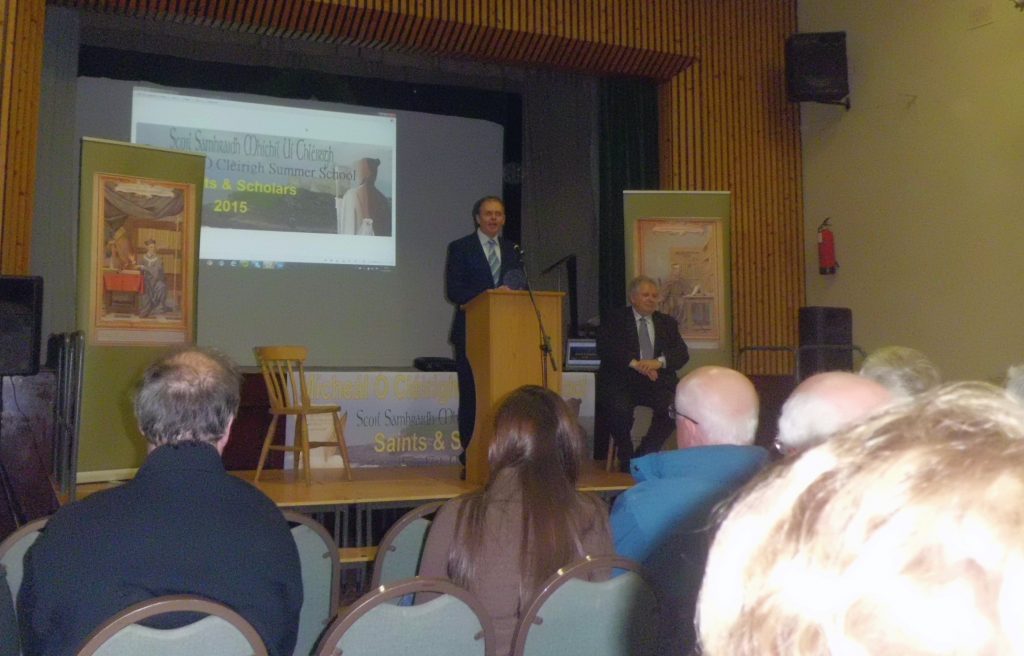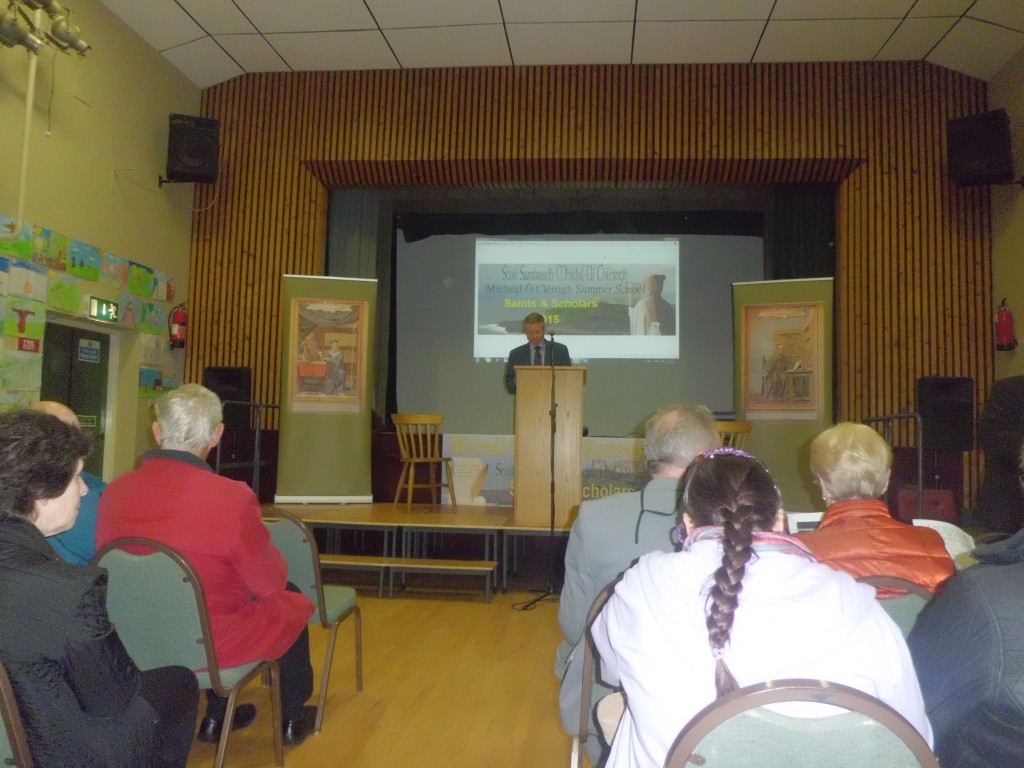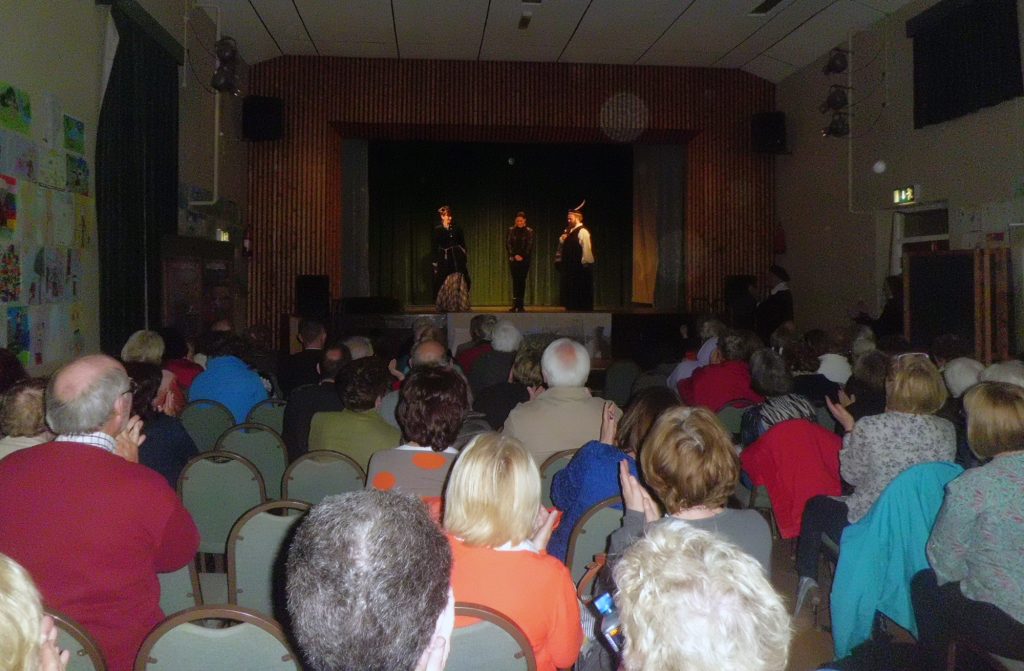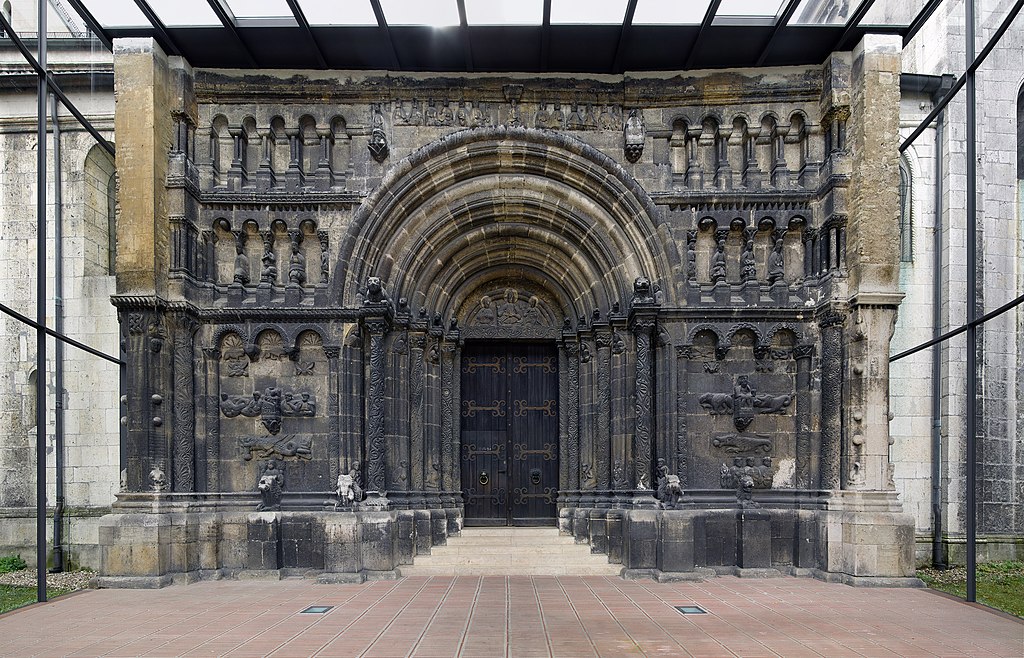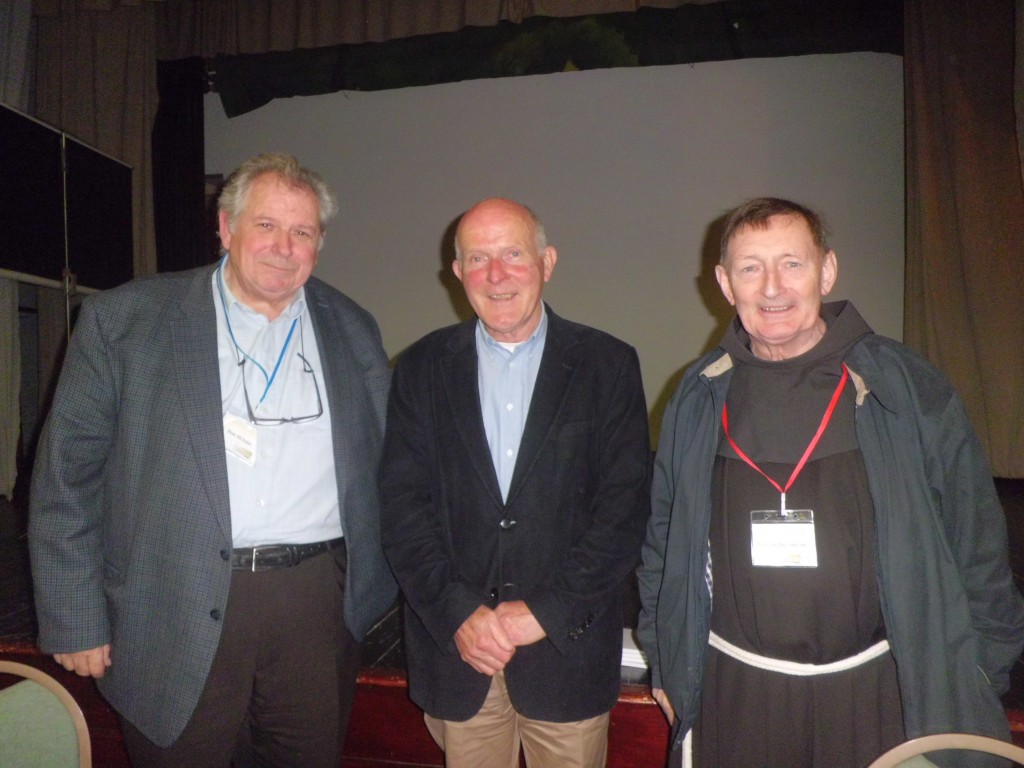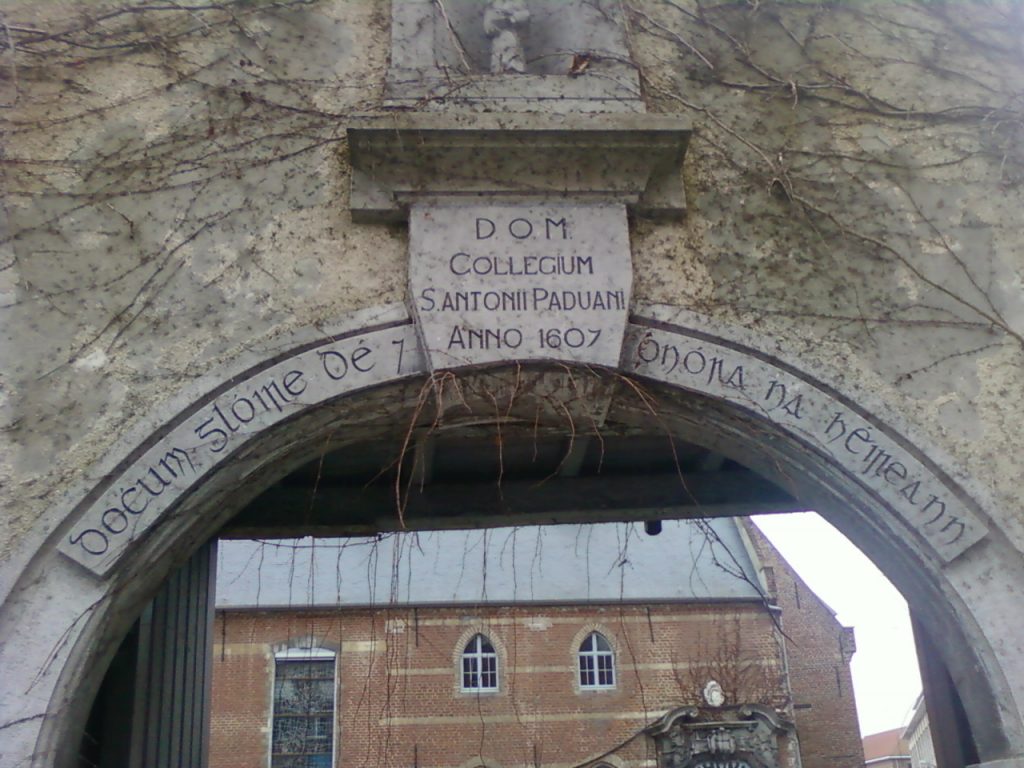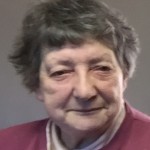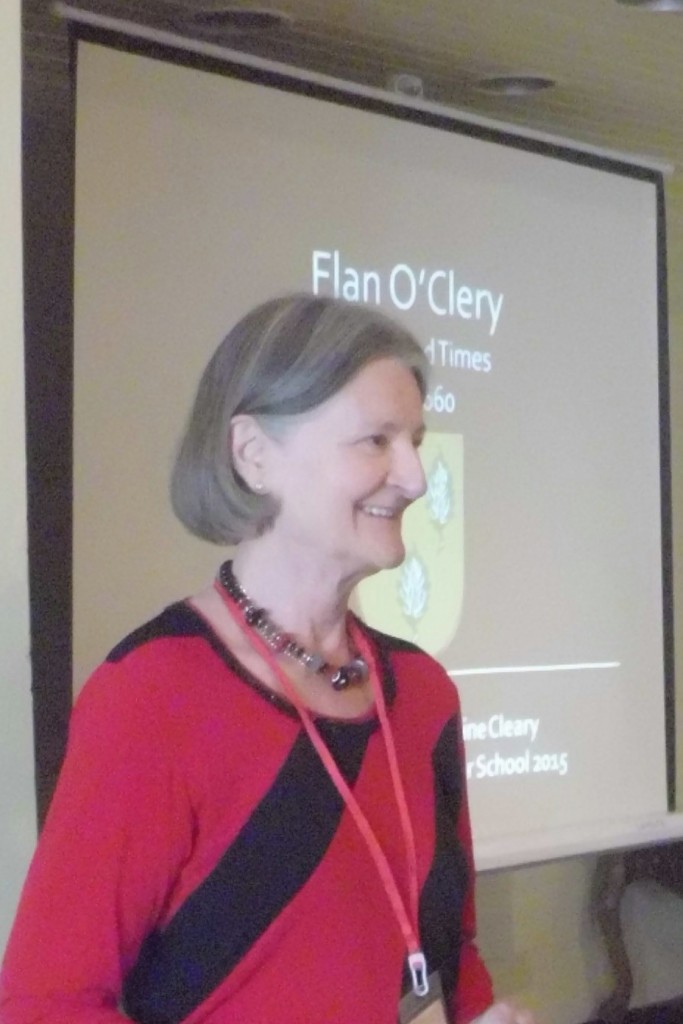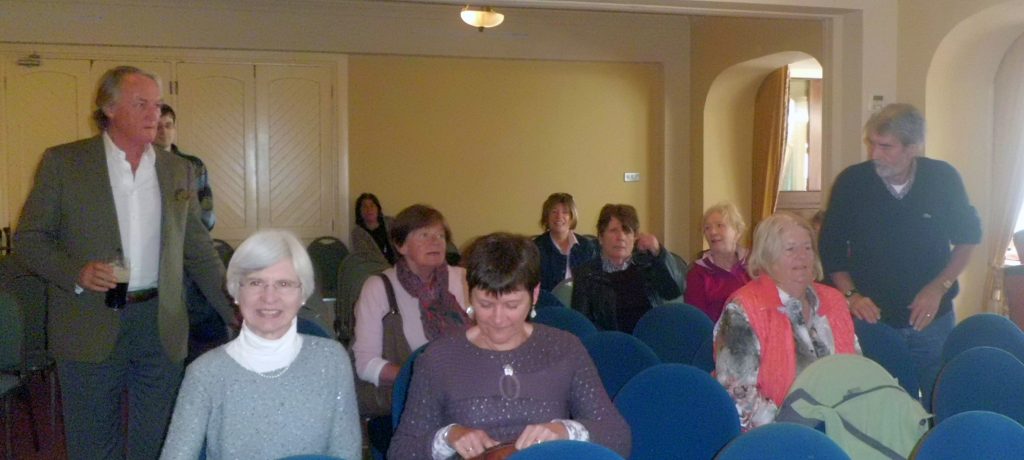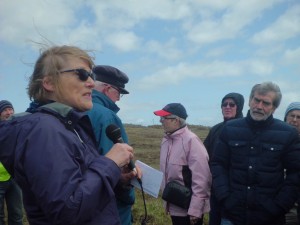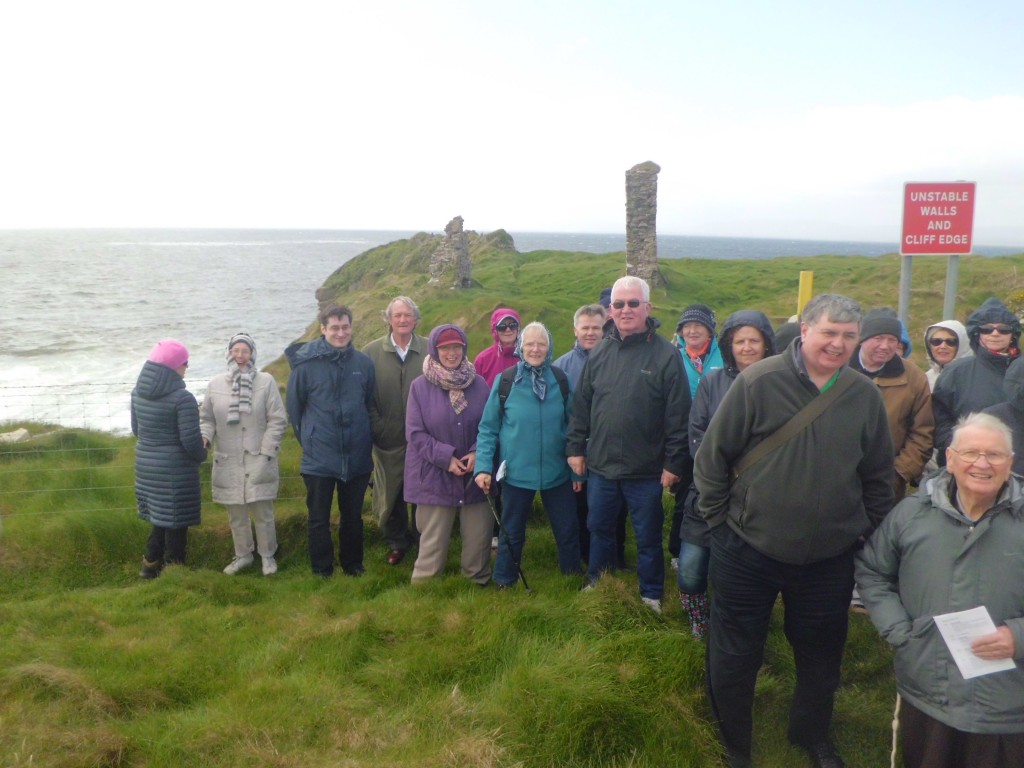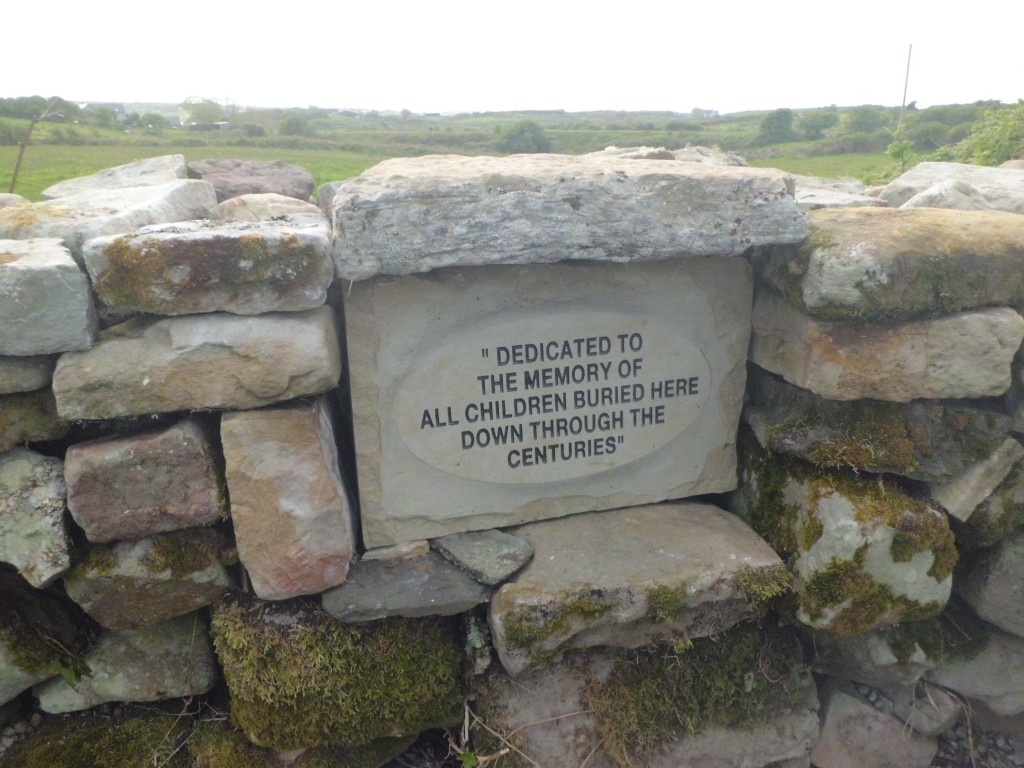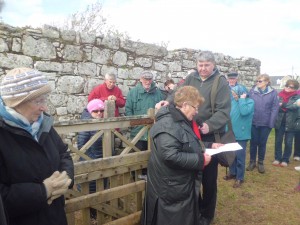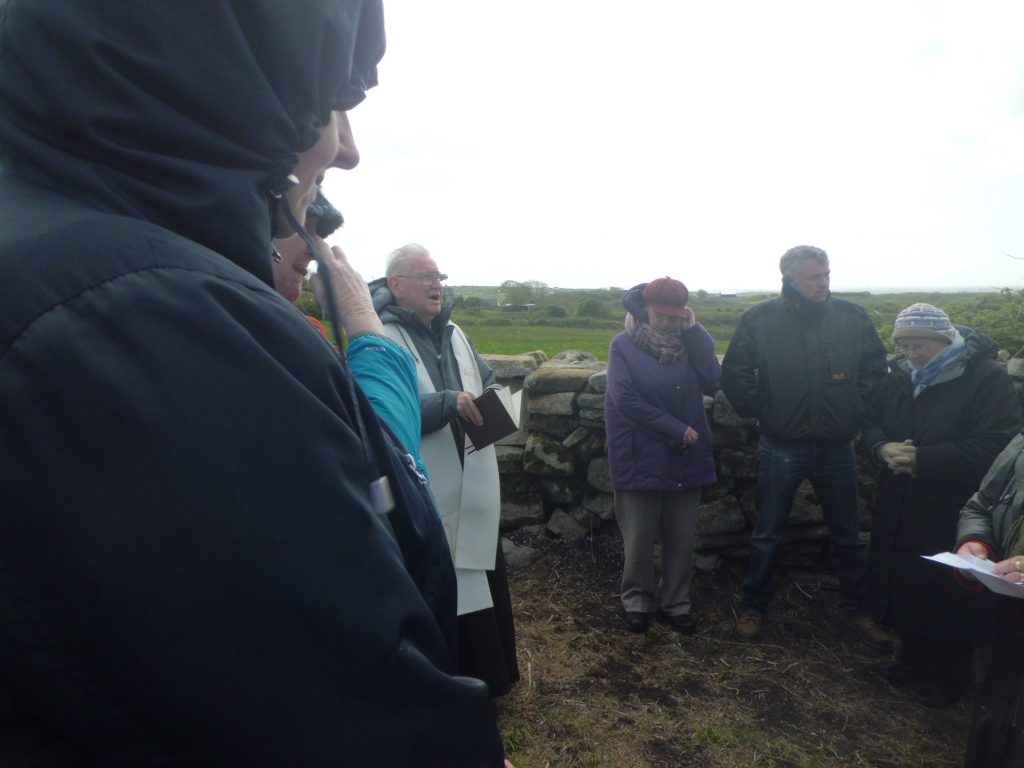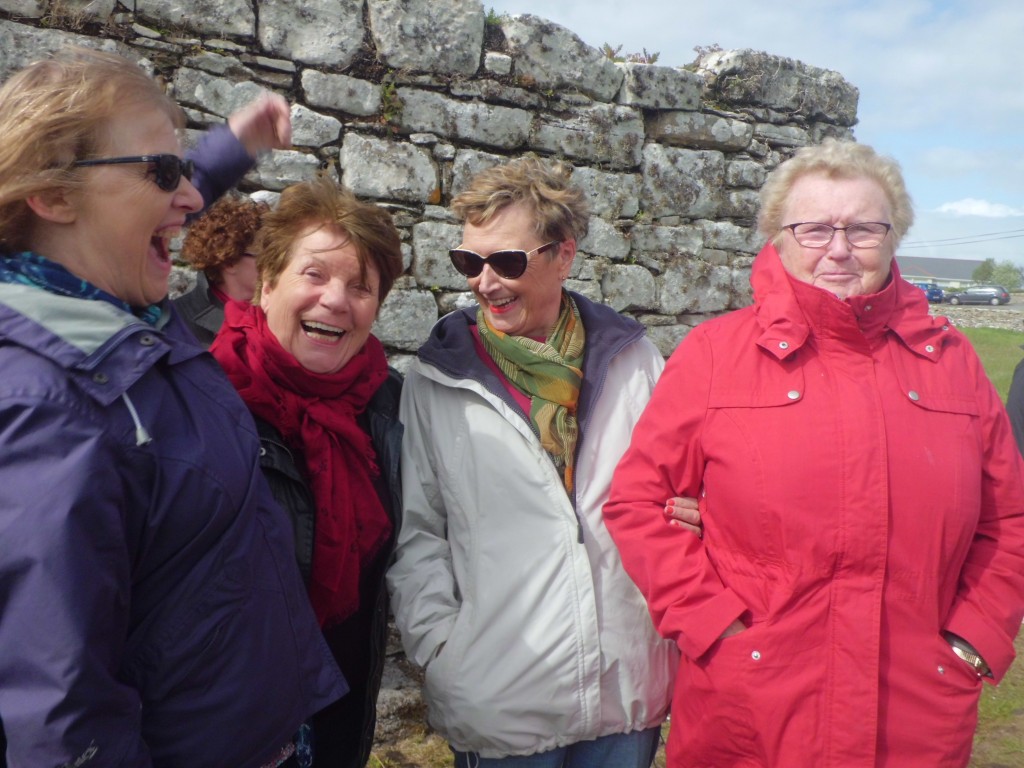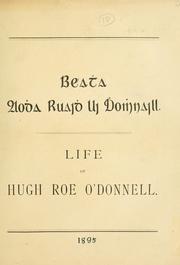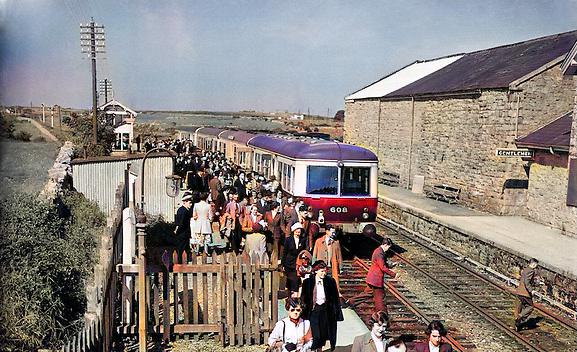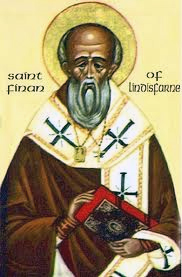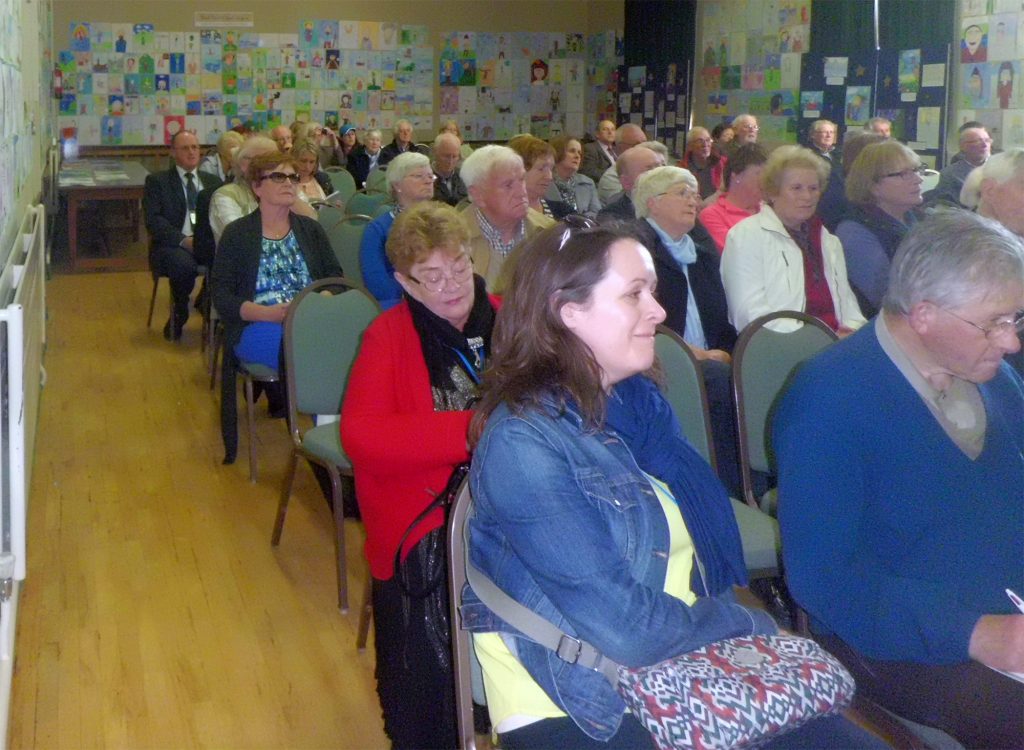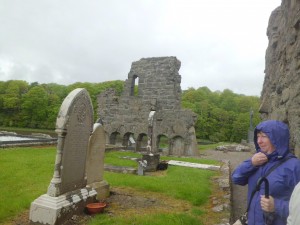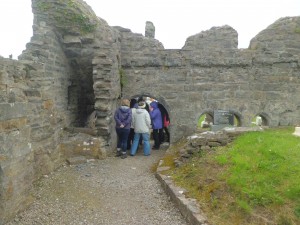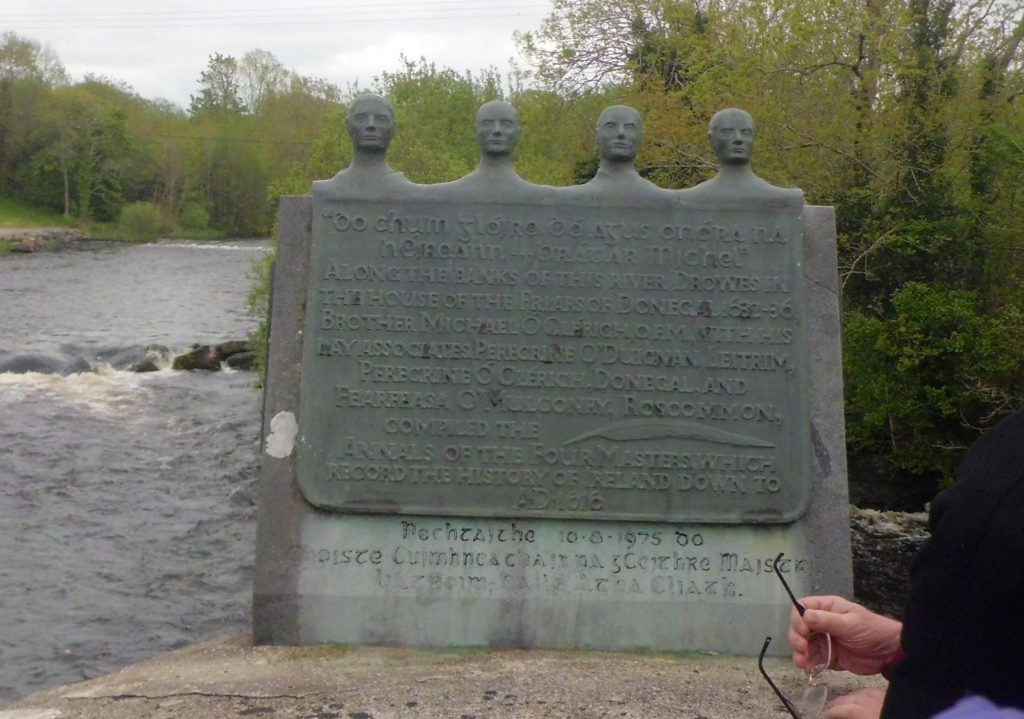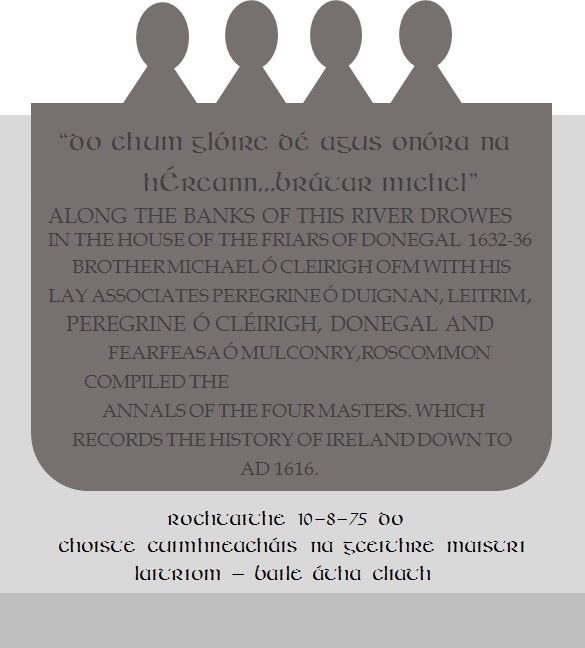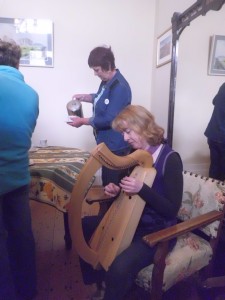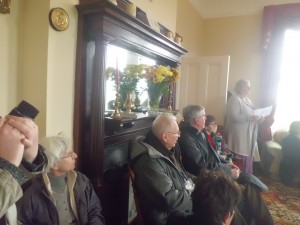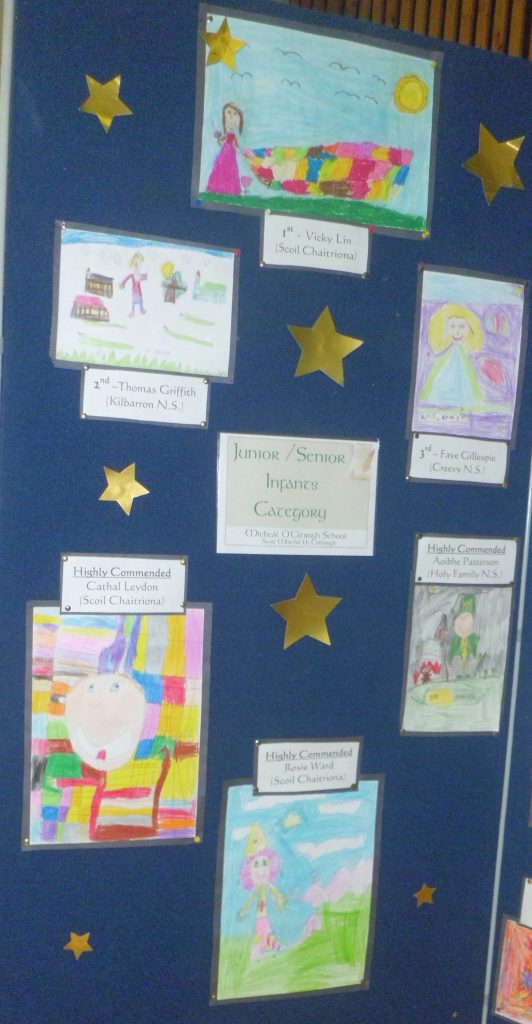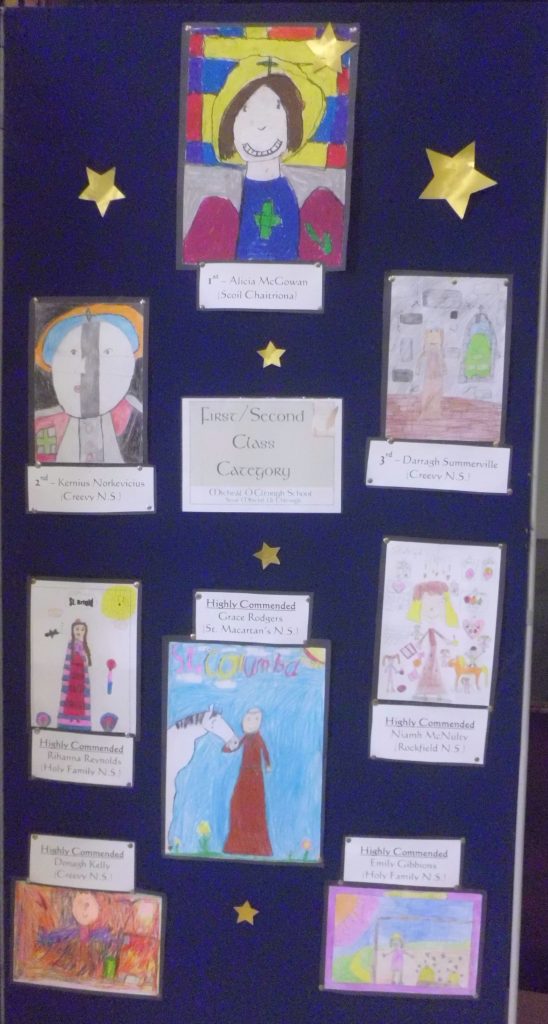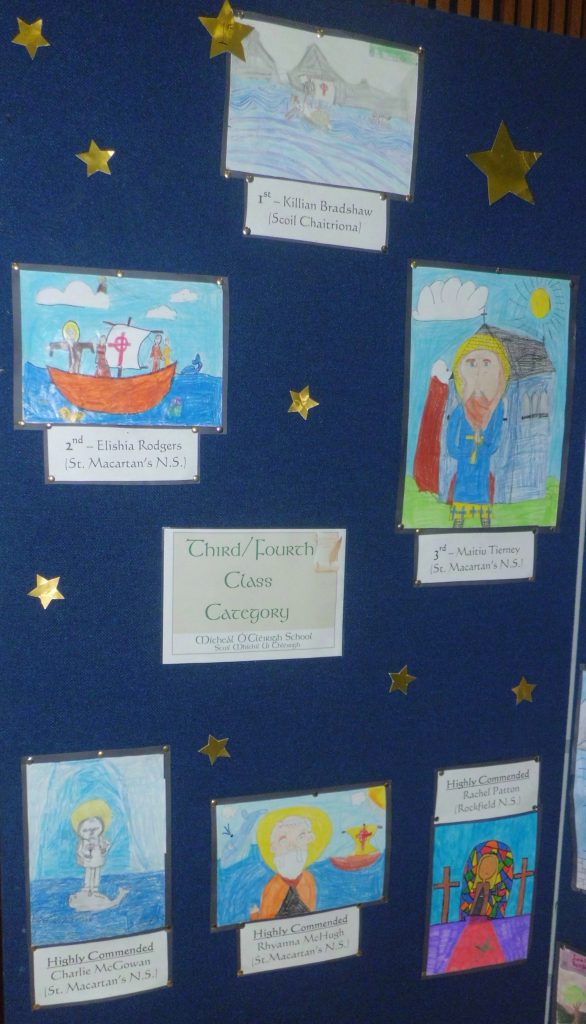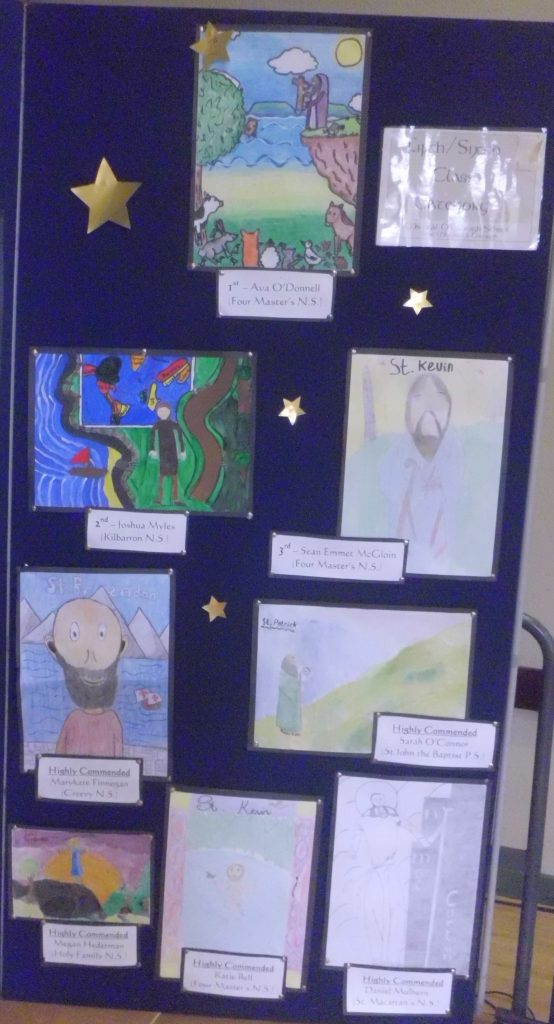
Friday 15th May 2015
Official Opening of the Summer School
by Minister of State Joe McHugh T.D.
First Session:
‘Favourers, intercessors and patrons: why the Irish saints mattered so much to the Irish Franciscans’
By Dr John McCafferty
The first talk of the evening was by Dr John McCafferty, Director of the Mícheál Ó Cléirigh Institute UCD who set out the theme for the weekend talks. There was a hierarchy of Saints in the Europe of the late Middle Ages and to the many Irish friars who fled Ireland in the wake of the Elizabethian conquest, found that the Irish saints that they were familiar with were not known about on the European continent and even those saints that founded monasteries in the far flung reaches of the continent in the ninth and tenth Centuries were often given the Latin name for the Irish “Scotus” which by the late Middle Ages became synonymous with the country Scotland. This caused them great concern and spurred them on to begin work on the Hagiography of Irish saints led by Br Mícheál Ó Cléirigh and begun in 1623 with his return to Ireland.
Dark Daughter – A Play by Soinbhe Lally
Local author Soinbhe Lally’s play telling the story of Nuala Ní Dhomhnaill or Iníon Dubh, wife of Aodh Dubh Uí Domhnaill and mother of Aodh Ruaidh Uí Domhnaill (Red Hugh O’Donnell) traces the events in the period after the death of Aodh Ruaidh in Spain in 1602 and when Iníon Dubh “Dark Daughter” commissioned Lughaidh Ó Cléirigh to write the story of her eldest son and his exploits. The book is called Beatha Aodh Ruaidh Uí Domhnaill (The Life of Red Hugh O’Donnell) and was written sometime before 1623.
The play is produced by Christian Carbin and directed by Arantxa Lopez.
Summer School Club – Sandhouse Hotel
Following the play the ‘School Club’ was held in the Sandhouse hotel where participants met and discussed the evenings events with bywho were attending the Summer School.
Saturday 16th May
From Tír Conaill to Bavaria: the extraordinary career of Muiredach mac Robartaig’
by Dr Dagmar Ó Riain Raedel UCC.
Dr Dagmar Ó Riain Raedel Dr Dagmar Ó Riain-Raedel has been a member of the Department of History, University College Cork with a special research interest in Medieval History. She has lectured and published widely on the connections between Ireland and Europe from 600 to the 19th century. In this talk she told the story of Muirdach Mac Robartaig who in 1067 left Ireland intending to visit Rome. Whilst in Bamberg, Germany, he became a Benedictine monk and he and some companions travelled to Ratisbon or Regensburg in Bavaria where they founded a monastery called Kloster Sankt Peter Regensburg |the monastery of St. Peter) Muiredach became its first Abbot and was known by his Latinised name of Marianus Scotus. He died in 1088 and soon after was beatified his feast day celebrated on the 17th April. He is also known for his work on the scriptures with his calligraphy work of the Codex 1247 of the Imperial Library of Vienna containing the Epistles of St. Paul with glosses, some of which are in Latin and others in Irish.
Louvain hagiography and Roman art: links between two Irish Franciscan continental colleges.
by Dr Mícheál Mac Craith
Dr. Mac Craith is the Emeritus Professor of Modern Irish in the National University of Ireland, Galway, and from 2011 to 2017 was Guardian of Collegio S. Isidoro in Rome. St. Isidore’s is the oldest Irish college in Rome. Run by the Irish Franciscans, it was founded in 1625. Fr. Mac Craith is a distinguished Irish scholar and has published extensively on the Renaissance, Counter-Reformation literature, Irish communities in exile in the early modern period, Jacobitism, Ossianism and contemporary Gaelic literature.
Seen here Having a good chat about the finer historic points of view are l-r Bian MacAmhlaigh, Chairperson of the Scoil Samraidh Mhíchíl UíCléirigh, Dr Padraig Uí Riain, keynote speaker and Dr Mícheál MacCraith
The Plantation in Donegal and Bishop George Montgomery
by Helen Meehan
Helen Meehan is a former President of the Donegal Historical Society and was born in Frosses Co Donegal Helen is a retired primary School teacher and in n 2012 was awarded an Honorary Masters Degree by National University of Ireland, Galway in recognition of her work in the genealogy, folklore and local history of County Donegal.
Bishop George Montgomery (1562–1621) was born in Broadstone Castle in Ayrshire, the youngest son of Adam Montgomery 5th Laird of Braidstaine and brother of Hugh Montgomery who along with Sir James Hamilton carried out their private plantation scheme of Clandeboy on the lands of Sir Conn O’Neill situated in South Co Antrim and North Down.
Helen told the story of George Montgomery who was appointed Bishop of Raphoe, Clogher and Derry by King James I in 1605. He lobbied to have free schools set up in Ulster and was instrumental in pursuing the allocation of church lands back to the Established Anglican Church. This pursuit led him into direct conflict with those former army officers who had been granted monastic and other church lands in the period after the Treaty of Mellifont and the completion of the dissolution of the monasteries in Ulster.
Eventually political expediency solved the issue with Bishop Montgomery receiving the more lucrative Bishopric of Meath in 1610 though he retained the Bishopric of Raphoe until his death in 1620. He is buried at Ardbraccan Church near Navan in Co Meath.
Fringe Events
Life and times of Flan O’Clery- Sandhouse Hotel
Pictured here is Madeleine Cleary giving the talk on the life and times of Flan O,Clery who was a cousin of Lughaidh UíCléirigh, author of the “Beatha Aodha Ruaidh Uí Dhomhnaill”. The talk was the culmination of extensive research into the story of Flan Ó Clery whose tombstone is one of the oldest in the Abbey Assaroe graveyard outside Ballyshannon.
Madeleine discovered a wealth of information about her ancestor by researching through the archives at Trinity College. The former O’Clery lands at Kilbarron were granted in part to Trinity College and the Anglican Bishop of Raphoe. The O’Clerys now found that they were the tenants and leased back some of the lands from Trinity through their agent Lord Folliott and later through the Conolly estate.
Ecological and Historic walk to Kilbarron Castle
led by Ruth Cleary
Everyone met at the Creevy Pier Car park where the walk was led by Ruth Cleary. Ruth Cleary had recently completed an Ecological report on the ruins of Kilbarron castle-part pf the recently completed Conservation Report on the castle. She is very familiar with the flora & fauna of the area.
The Kilbarron Castle and Conservation Group was formed in 2013 and are striving to conserve the ruins of the castle which was a bardic school founded by Diarmaid na dTrí Scoil in the 15th Century and remained a place of learning until the early 17th Century when Lughaidh Ó Cléirigh, the last Ollamh to the Ó Domhnaill (O’Donnells), was compelled to leave his clan lands at Kilbarron and move to Glenswilly in the Barony of Kilmacrennan.
A Visit to the ruins of Kilbarron Church and Dedication to the Childrens graveyard
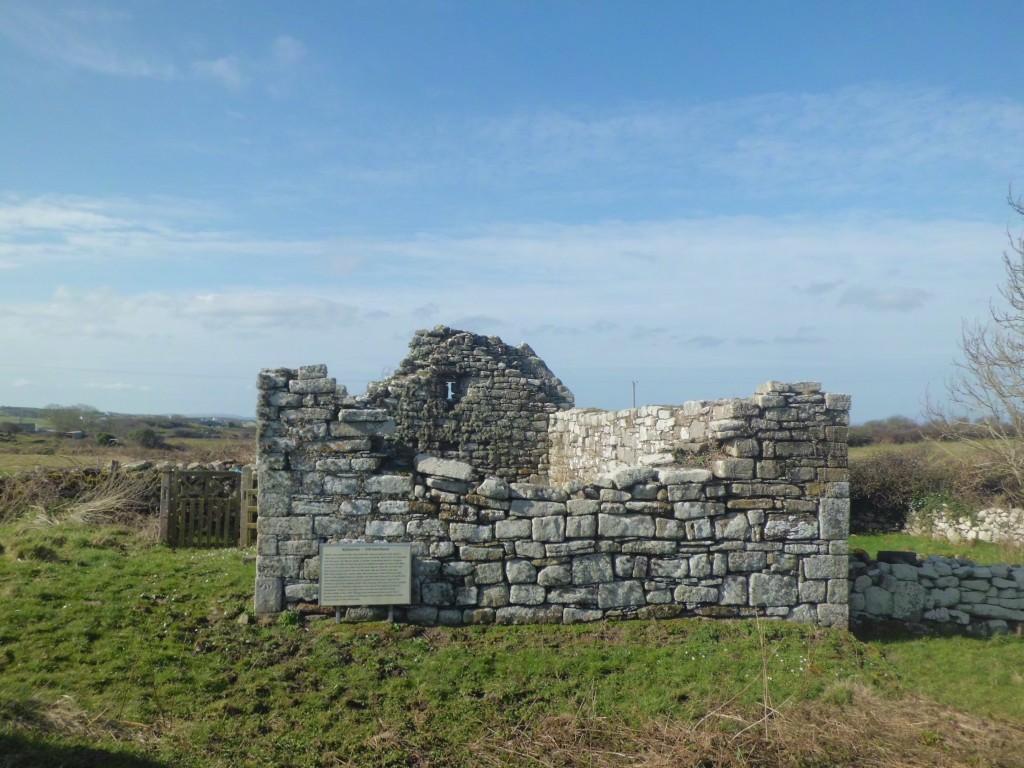
A dedication of a plaque to remember the children buried in the vicinity of the ruins took place. The prayers were led by Fr Vincent Galloghley. Although the church was abandoned sometime after the Plantation of Ulster, the established Anglican church was built sometime around 1625 in the nearby town of Ballyshannon. The ruins were clandestinely used for mass services right through Penal times.
Part of the graveyard continued to be used to bury stillborn and unbaptised babies as the Catholic church at that time decreed that those unbaptised to be buried in un-consecrated ground. The memorial records this time.
Workshop in Hall:
The Story of “Dark Daughter” and Lughaidh Ó Cléirigh.
A number of people including the author of “Dark Daughter” Soinbhe Lally discussed the historic background to the events portrayed in the play seen on the previous night.
The discussion examined the life of Lughaidh Ó Cléirigh who succeeded to the hereditary role of Chief Ollamh to the ruling O’Donnell clan of Tír Chonnaill. The role of an ollamh was partly advisor, lawyer and chronicler to a particular ruling family. With the defeat of the Ulster Gaelic Chieftains at Kinsale in 1602 and the subsequent Flight of the Earls in 1607, families attached to these former rulers found that they were out of work and additionally lost lands bestowed on them by and large in the Plantation of Ulster.
Lughaidh was summoned to the Inquisition at Liffer (Lifford) in September 1609 where he stated that ” the parish of Kilbarron contains five quarters in all, whereof one quarter is herenach land possessed by the sept of the Cleries as herenaehes, paying thereout yearlie to the lord busshopp of Raphoe thirteen shillings four pence Irish per annum, six meathers of butter, and thirty-four meathers of meale ; and that there is one quarter named Kildoned, in the tenure of the said sept of the Cleries, free from any tithes to the busshopp,” &c. And again, ” That there are in the said parishe three quarters of Collumbkillies land, everie quarter conteyninge sixe balliboes in the tenure of Lewe O’Cleerie, to whom the said lands were sithence mortgaged for fortie pounds, by the said lateEarle of Tirconnell unto the said Lewe, who hath paid there- out yearly unto his Majestie, since the late earl’s departure, four poundes, two muttons, and a pair of gloves, but nothing to the said busshopp.”
A Panel discussion was held in the hall after seeing a short film on The coming of the Franciscans to Rossnowlagh in 1952
The friars arrived in Rossnowlagh in July, 1946 and their first Church, made from two army huts, was blessed by Monsignor McGinley on July 22nd, 1946. On August 3rd, 1946, Very Rev. Fr. Camillus Courtney OFM. was appointed first superior of the new Franciscan community in Rossnowlagh.
Eventually the present site of the friary was obtained and, on April 23rd. 1950, the cutting of the first sod of the Church foundation took place. October 8th, 1950 is another very important day in the history of Franciscan Rossnowlagh, for on that day Monsignor McGinley blessed the foundation Stone of the new Church. The blessing and dedication of the church took place on 29th June, 1952. Present for this great occasion were President Sean T. O’Ceallaigh, Mr. Eamonn De Valera, Taoiseach, Dr. McNeely, Bishop of Raphoe and Fr. Hubert Quinn OFM., Provincial.
The friars to whom God has given the grace of working should work in a spirit of faith and devotion and avoid idleness, which is the enemy of the soul, without however extinguishing the spirit of prayer and devotion, to which every temporal consideration must be subordinate. Second Rule of St. Francis (5th. Chapter). (Extract taken from Our History – Rossnowlagh Friary )
Fifth Session: Keynote Address
The Br. Pascal Williamson Memorial Lecture
The Saints of South Donegal
by Dr. Pádraig Ó Riain
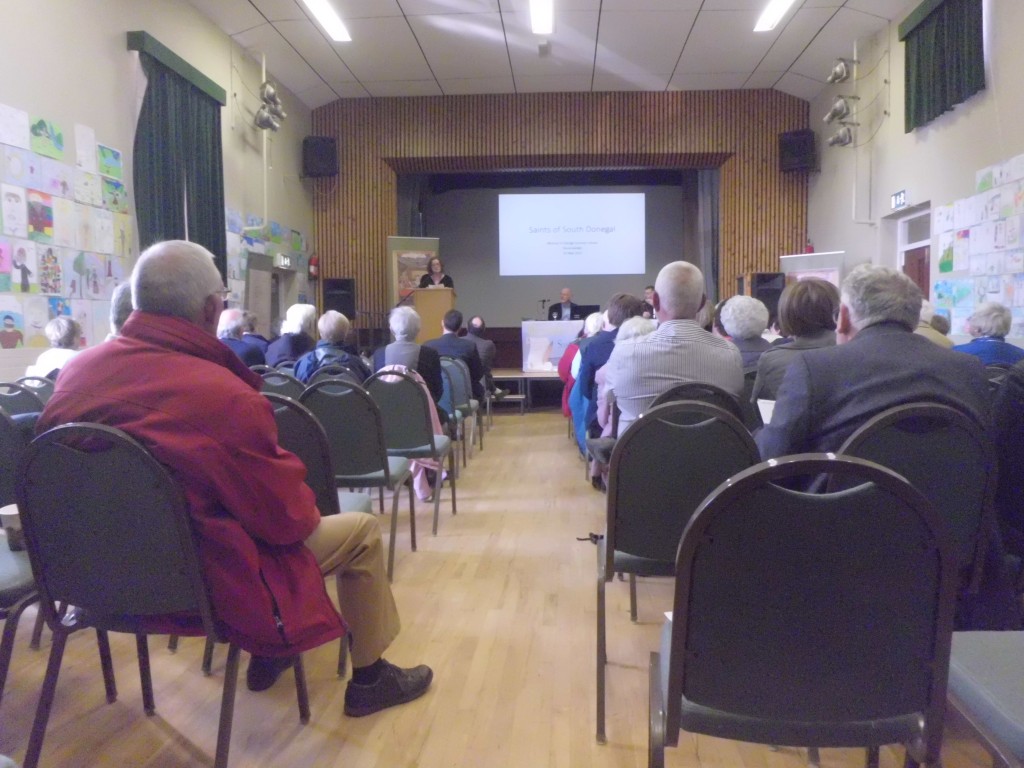
Dr. Pádraig Ó Riain is Emeritus Professor of Early and Medieval Irish at University College, Cork
Pádraig Ó Riain is an Irish Celticist and prominent hagiologist focusing on Irish hagiography, martyrdom, mythology, onomastics and codicology. He has spent much of his academic life at the University College, Cork where he became a lecturer in 1964. Between 1973 and his retirement, he was professor of Old and Middle Irish. He has been a member of the Royal Irish Academy since 1989, president of the Irish Texts Society since 1992, Parnell Fellow at Magdalene College Cambridge since 2002.
In his lecture he discussed the overlapping of Saint’s names where often the same person was known by different names giving the example of St Colman who is likely to be the same person as St Canice. He went further to explain that St Barron or Barr Fhionn could be the same person as St Finnbarr of Cork and both names may have been nicknames (as the name means a blond or white haired person) for St Finnian of Movilla founder of that monastery in north Co Down.
This research caused a stir in Cork some years ago and came to the attention of the press who reported the annoyance of some people to the fact that their St Finnbarr might not have been a Cork native! Professor Ó Riain explained that in the middle ages Saints were a bit like pop stars today and attracted a following and churches were often named after a particular popular saint favoured by a church dignitary or a local chieftain and later given a local narrative either by that Saint visiting the area or by him or her being a native of the district.
Conference Dinner
This event was held in the Sandhouse Hotel in Rossnowlagh. There was a large attendance and after the dinner and after a round up of the weekend events was given by committee member Michael McLoone, everyone moved to the stage area where entertainment was provided by the singers of Bel Canto led by their musical director Angela Currid. Afterwards the Summer School Club took place with an opportunity for participants to meet the speakers and others to discuss the issues that arise in the school.
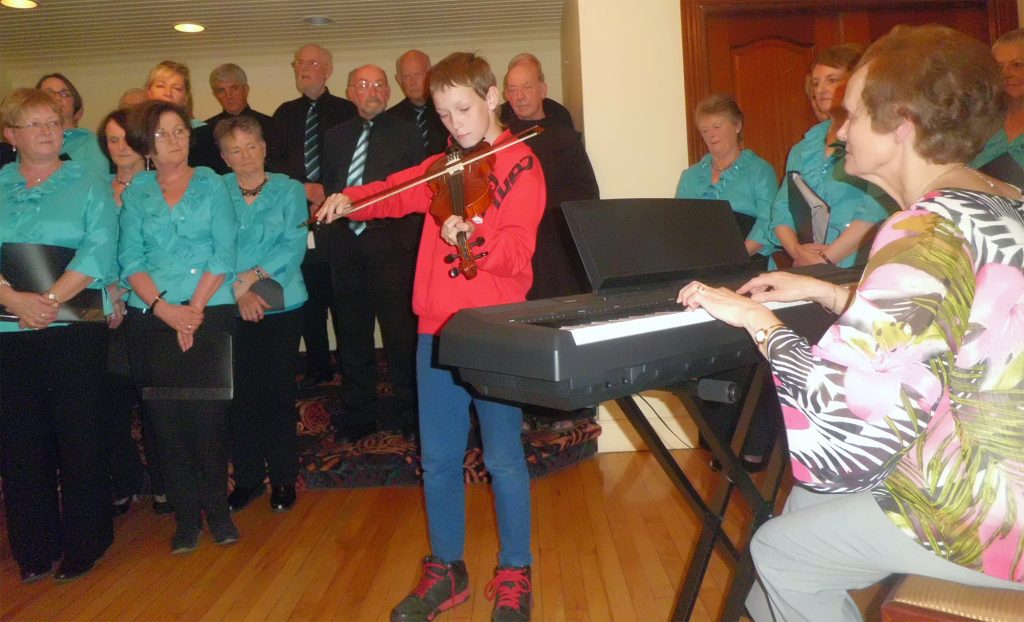
Sunday 17th May 2015
The Mícheál Ó Cléirigh Memorial Mass was led by Father Mícheál MacMícheál MacCraithCraith who said Mass in Irish in the Friary chapel.
Ba é an tAthair Mícheál MacCraith a bhí i gceannas ar an Aifreann Cuimhneacháin Mhíchíl Uí Chléirigh a dúirt Aifreann i nGaeilge sa séipéal Bhrathair.
Tour of Four Masters Sites in Ballyshannon, Bundoran, Tullaghan and Donegal town
Pictures from the Sunday morning bus tour led by Jim McIntyre
The tour left from the Rossnowlagh Friary. The tour visited the ruins of the Franciscan Friary in Donegal town. Then travelled southwards to Ballyshannon onwards to Kinlough stopping at the memorial to the Four Masters erected on Mullinaleck Bridge. Then to Tullaghan where the Bundoran Historic Society hosted a reception and the group will saw the ruins beside the Drowes reputed to be the site where the Annals were written by Br Mícheál and his collaborators.
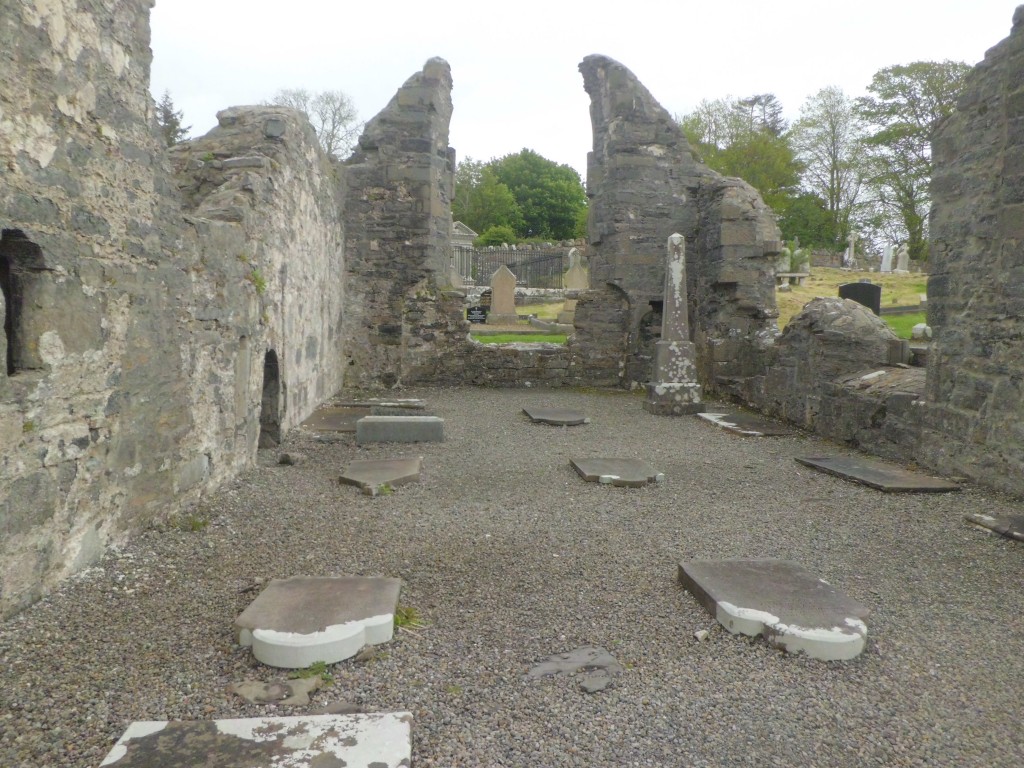
Four Masters Memorial on Mullinaleck Bridge
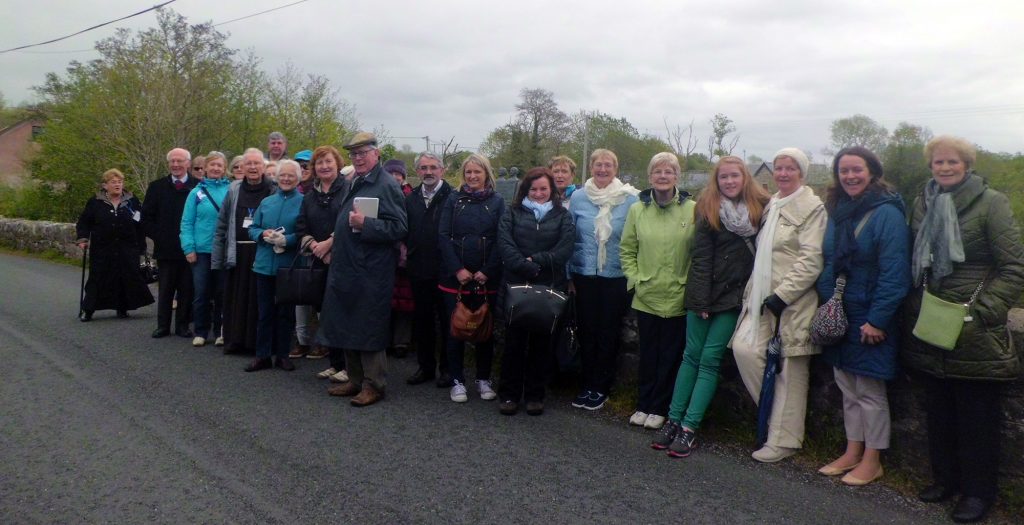
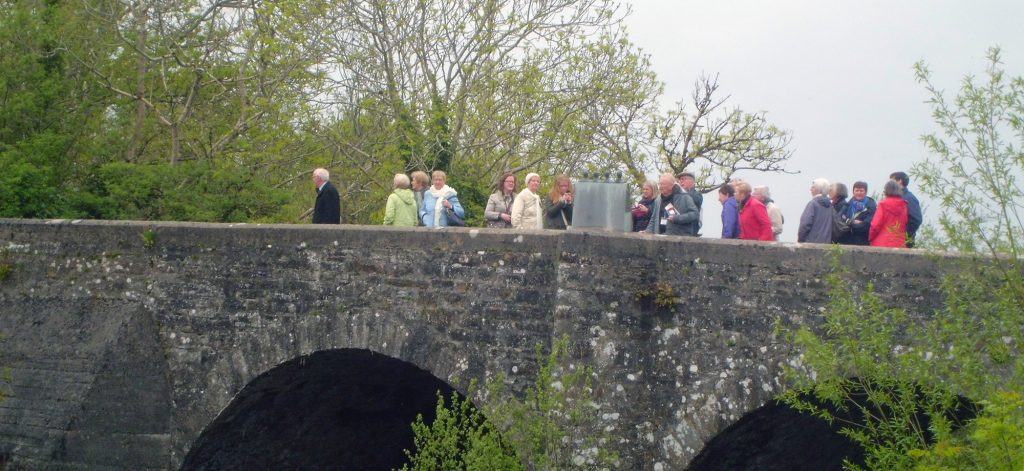
The memorial to the Four Masters was erected on Mullinaleck bridge on the 10th August 1975 by the Dublin Leitrim Society. The memorial was designed by by Irish sculptor, James McKenna. He was born in Dublin on the 21st June 1933. Growing up in Co. Wicklow, James was educated at Kilcool National School, Bray Technical School and the National College of Art and Design, (now the NCAD) in Dublin from 1950 – 1955. He qualified with a Diploma in Sculpture and won a scholarship to Florence. He was responsible for many public art works including Couple at Ballyrahan Cross, 1798 bronze 1969, Famine Village 1998 and Warriors of Banba in 1999 . He died in the year 2000.
The monument was strategically sited on Mullinaleck bridge as it is not known for definite which side of the River Drowes, the boundary between Donegal and Leitrim, that was the site of the scriptorium used by the annalists. In the early 17th Century the area was heavily wooded and gave easy escape routes with the nearby Lough Melvin. On the Leitrim side of the river is an area jutting into Lough Melvin known as Ros Brathar or Rosfriar (Friars point). Whilst on the Donegal side of the river in the townland of Ardfarna is an area reputed to be the site of the temporary monastery. It is perhaps worth noting that the nearby lands of Drumacrin(which likely included Ardfarna) were granted to the Ua Cléirigh clan by the O’Donnells in the 15th century and would have been familiar to the O’Clery members of the Franciscans at that time.
Bundoran Historical Society Reception
The group were invited to refreshments and entertainment by the Bundoran Historical Society in Val Kelly’s house in Tullaghan where the group saw the possible site of the castle erected by the O’Conors of Sligo in the 14th century and later destroyed by the O’Donnells.
After the Treaty of Mellifont in 1603 Henry Folliott was charged with maintaining the castles at Ballyshannon, Drowes and Beleck(Belleek) at his own expense but was granted the Abbey Assaroe lands south of the River Erne. Later he would purchase the Abbey lands north of the river from Auditor General Sir Francis Gofton .
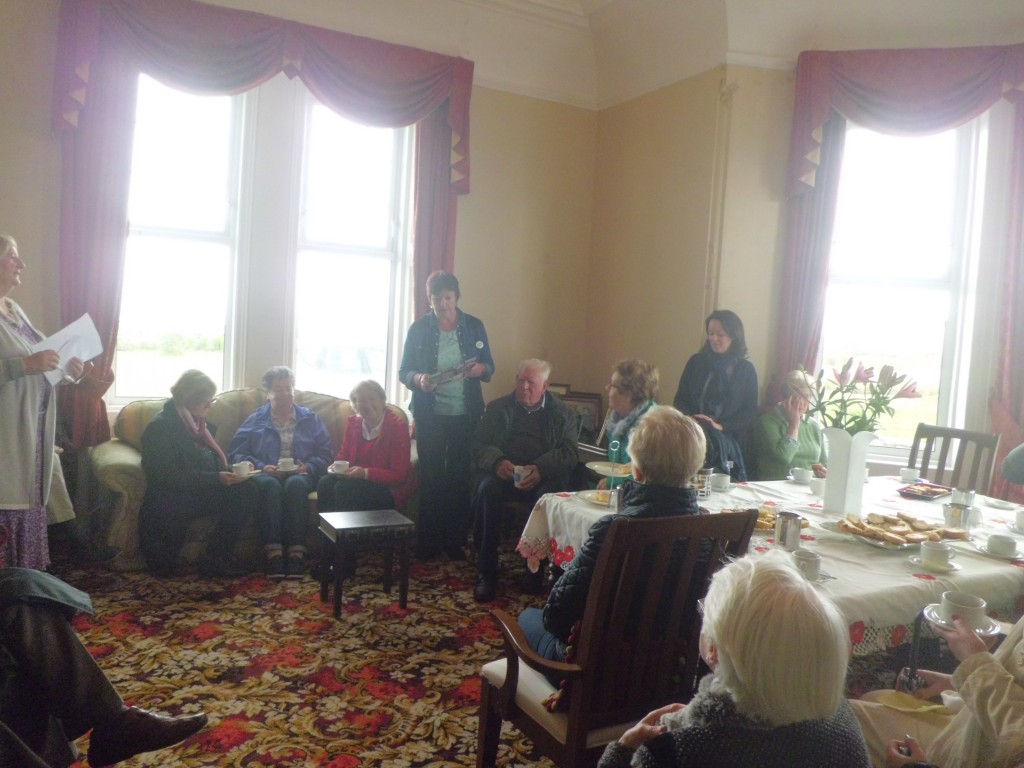
.
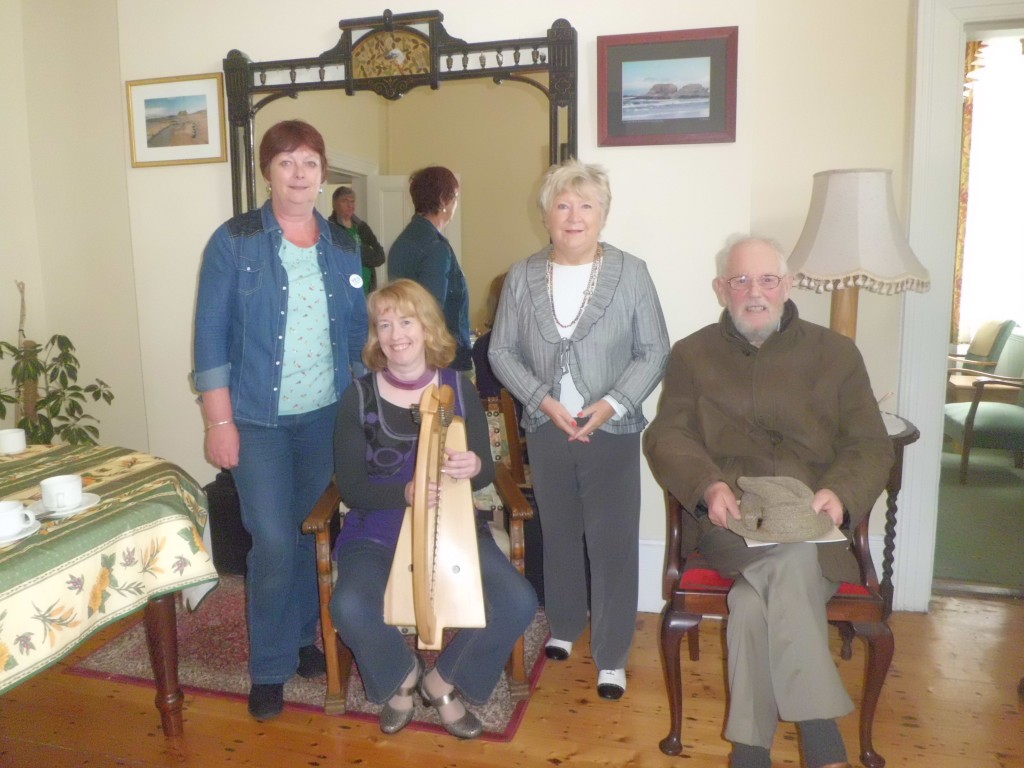
Display of Primary School Projects and Prize-giving
The display and awarding of prizes to Primary School pupils took place at 12 noon on Sunday 17th May. The theme of the competition this year was “Saints and Scholars” and the interest and participation among all the schools in the locality has been a great success. Taking part are Primary schools from three counties Donegal, Leitrim and Fermanagh.
A very successful weekend enjoyed by all who attended.
